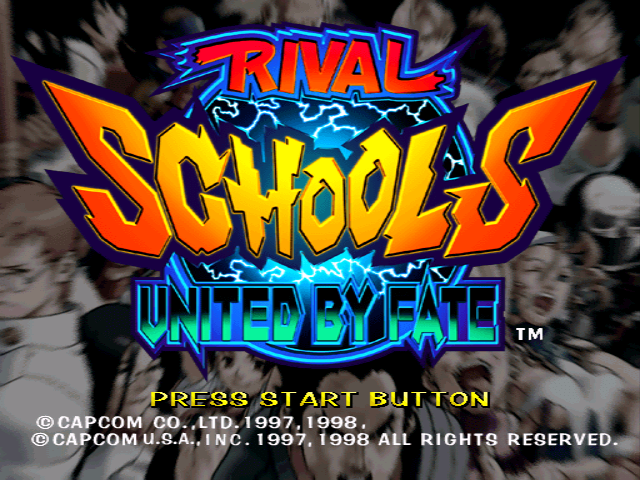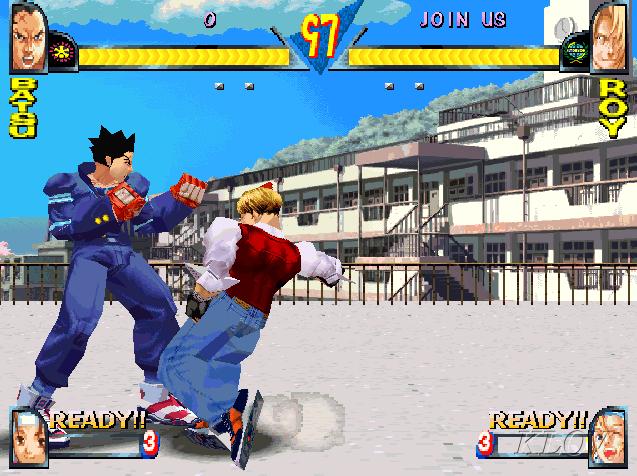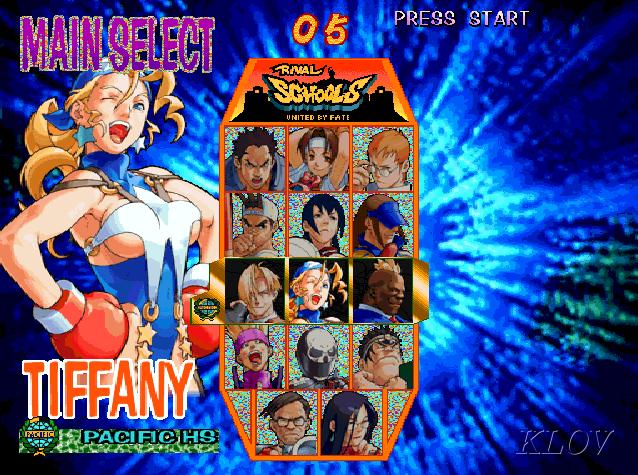Game: Rival Schools: United By Fate
Console: Sony Playstation
Developer: Capcom
Release Date: 30th September 1998
Most Capcom fighting games of the late 90s and even a little beyond were fairly certain to be classics. Rival Schools: United By Fate is no exception and has its own comic series, just like the Street Fighter series. The style of the game is based deeply in anime with the subbed cutscenes between battles and the storylines that go with them set around feuding high schools and their students. Reaching the end of a storyline with two characters from the same school will unlock their ending.
Gameplay involves two characters per side and although the fighting is one-on-one, there's team up moves which can be used when your "burning vigor gauge" is filled sufficiently. Players may also choose to swap between their two characters between rounds which adds strategy and variety to the fighting. Other than this it plays like a fairly regular 3D polygonal fighting game, including special moves, combos and weapons in the case of some characters.
Against the computer in arcade mode, the player makes their way through 7 chapters of storyline. The fights start out fairly easy but even on the lowest difficulty setting the last few fights get much harder to win. It's a strange difficulty curve and its easy to get annoyed when first playing the game because this fact makes it pretty hard to beat. Learning the controls thoroughly and your character's special moves can help with this, as button-mashing will only get you so far against the computer.
The fighting itself is good controlwise and there's a large amount of moves and special attacks which are available to players. My only real complaint of the controls is that movement is controlled by d-pad only, so analog stick users might find themselves at a disadvantage. With a 4-button punch/kick control system, the fighting focuses on strategy with regard to the use of heavy or light attacks and filling the burning vigor gauge to perform special and team attacks.
The choice of characters is fairly comprehensive with 16 to begin with, and a further 24 unlockable through gameplay. All starting characters are developed through the game using their storylines and there's a good amount of variation both in terms of design and the fighters movesets. With 3 students in each highschool 'team' and 2 associates working for the storyline's enemy it's also interesting to observe the history of fighting between the schools as revealed in the cutscenes and the storyline from each team's perspective.
Graphically the game is a strange mix between being stylistically great and a little unimpressive when up close. The detail and polygons seen when the camera zooms in at the end of a fight reveals somewhat subpar graphics even for the original playstation. The cutscenes, character select and menu screens however look a lot more impressive due to their style. Soundwise the music's not really anything special, however there's good voice acting in the cutscenes and sound effects in battle.
The game came with two disks, one with the arcade game and two player mode featured on it, and the other with a practice mode, unlockable mini games and alternate modes of combat such as a tournament and league modes. While these are fun, and its nice to see some unlockable content, the second disk does feel somewhat redundant as all of the main features are on the first disk.
Overall while the arcade mode is unforgivingly hard, its almost worth learning a few character's movesets well to beat it and getting to the end of their storylines. The fighting itself is good and two player mode is fun and balanced on the whole no matter who is chosen. With its own character and charm this game is a fairly obscure gem and although it could probably do with better graphics, everything else plays like a charm.
Rating: 78/100
Grade: B





No comments:
Post a Comment